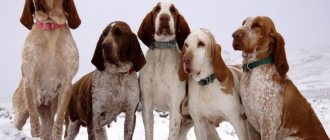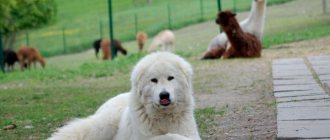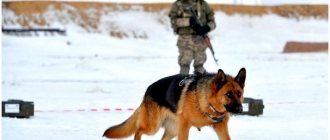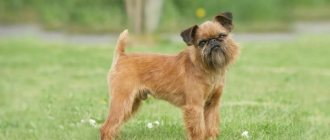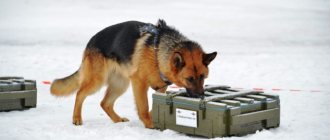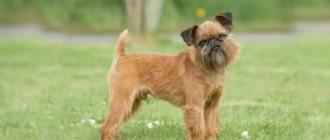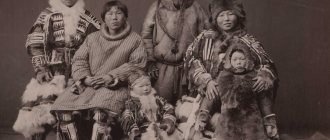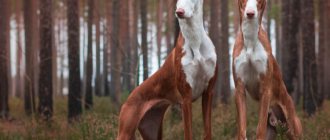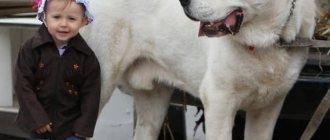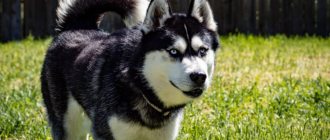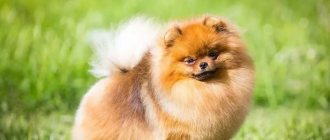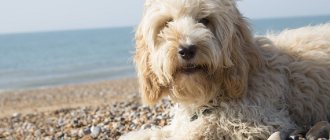Four-legged friends have served man for many millennia. Each breed has its own purpose. Since ancient times, northern sled dogs have been used in the Arctic Circle to transport people and goods over long distances. During this time, among them there was a selection of representatives with a characteristic appearance and specific qualities, thanks to which they are able to cope with their task better than others. With the participation of these hardy, intelligent animals, both poles of the Earth were conquered, Alaska was developed, and the northern regions were explored.
Sled dogs are the fastest animals in the world over long distances. In addition to physical endurance, they are distinguished by their balanced character and willingness to protect the owner from the bear and help in the hunt. Modern sled dogs successfully participate in sports competitions - cross-country racing in a sled with a load. At the world championship the distance is more than 100 km. The most common breeds are huskies, huskies, and malamutes.
Northern Inuit dog
The breed, which is not recognized by the Fédération Cynologique Internationale but has its own amateur club, was developed in the 1980s in Canada as a result of crossing several breeds: Siberian Husky, Alaskan Malamute, Eskimo dog and German Shepherd. Genetic studies have disproved the presence of wolf genes. Proper upbringing and training of puppies that resemble a domestic wolf is necessary from early childhood: dogs are difficult to train. But they can be loyal and devoted friends, smart and friendly, unpretentious and hardy. Specially trained Inuit dogs are recruited to serve in the police - to search for drugs, save people, and act as guides.
Kugsha
- Height: from 51 to 69 cm
- Weight: from 27 to 50 kg
- Life expectancy: 12 to 14 years
- Temperament: smart, resilient, curious, playful, stubborn
No official kennel club recognizes the kugsha, so such a pet can be difficult to find. This is a large dog with a wolfish appearance and high intelligence. Most experts recommend this breed only to experienced owners because the kugsha is difficult to train. On the other hand, the Kugshu is moderately sociable, creates a strong bond with family members, and can make an excellent pet for an active owner.
Tamaskan dog
This breed was bred in Finland on the basis of huskies, Alaskan malamutes, Siberian huskies and German shepherds exported from the USA. The wolf-like dog is not officially recognized by the FCI. Dog breeders from all continents have become interested in it. The elegant and picturesque-looking dog has highly developed mental abilities and excellent working qualities, and demonstrates high results in sports competitions. Animals do not tolerate loneliness well and do not like to be left at home alone. Aggressive behavior is not typical for Tamaskans, but if they suspect a threat, the dog’s actions will be unpredictable. Among his relatives, the dog prefers to be a leader. He allows himself to be stroked only by those who are especially trusted.
How to choose the right puppy
Breed of rabbit dogs 7 letters
To select a future reliable puppy you need:
- know the characteristics of behavior;
- consider different options depending on your hunting goals;
- choose a nursery;
- exclude genetic defects by veterinary examination.
The puppy must be active, cheerful and brave. Excessive cowardice or aggressiveness is excluded.
Competently choosing a dog for a hunter’s purposes is a real science that is not difficult to comprehend.
It is important to follow simple rules and count on the breeder’s integrity. A defective dog is a huge set of problems
Training should be carried out by an experienced dog breeder who is able to maintain character, show perseverance, and pay attention to the future assistant.
Canadian Eskimo dog
The oldest North American Eskimo husky (otherwise known as the Inuit dog) is a Spitz dog. It is considered the rarest surviving purebred native breed. More than a thousand years ago they were moved from Siberia to the American continent. Now a few representatives of Canadians are on the verge of extinction. Dog lovers have created a special fund for its restoration and are working to increase the number of animals. In the 80s, the breed was recognized by the Canadian Kennel Club.
With its strong build and impressive appearance, the Canadian dog resembles a wolf. Her physique proves the animal's ability to do hard work. Their thick, warm coat allows them to withstand very low ambient temperatures. Representatives of the breed are distinguished by intelligence, courage, devotion, and hard work. They can stay in the cold for days and get their own food. Now they are used for tourism and commercial polar bear hunting.
Types of hunting dogs
In the International Register, all hunting dogs are divided into several species. They differ from each other in characteristics, character and tactics they use during the hunt. The following table will help you choose a hunting companion.
| View | Image | Who are they hunting? | Qualities | Tasks |
| Greyhounds | Foxes, hares, small ungulates | Sharp vision, high speed | The dog overtakes the prey and begins to strangle it | |
| Hounds | Hares, foxes and sometimes wild boars | Excellent sense of smell, hunting passion, endurance, allowing one to show rare persistence when chasing game | He goes on the trail of a wild animal, notifies the owner of his success with a loud bark, having discovered the animal, drives it out of its hiding place and drives it towards the owner so that he can shoot it | |
| Likes | Birds, fur-bearing animals, wild boars, bears | Excellent sense of smell, endurance, giving the opportunity to show persistence when chasing | They take the trail and lead the owner along it. Having overtaken a wild animal, they rush at it, trying to hold it back, barking at it or using their teeth. During duck hunting, they scare the birds so that they rise into the air from the shelter. They also take shot carcasses out of the bushes or from the water and bring them to the owner. | |
| Spaniels | Birds, hares, roe deer | They swim well, have soft jaws, so they don’t spoil their prey. | They catch up with the animal and call the owner with a loud bark, trying to hold the animal. Bring prey, including from water | |
| Burrows | Foxes, badgers | Small size, persistence, hunting passion | They penetrate the hole and force the animal to leave it. Or they can pull the animal out of the hole themselves |
Each type of hunting dog includes several breeds. All of them also have their own characteristics, advantages and disadvantages. There are also breeds that are used for hunting, but are not included in any of the groups described above. Of course, in order to choose a worthy companion who will bring maximum benefit during the hunt, it is worth familiarizing yourself with them in more detail. We suggest doing this.
Chinook
The breed was developed at the beginning of the twentieth century. American dog handler, who named her after one of the first representatives. In the selection process, the goal was to select working qualities: speed of movement, adaptation to low temperatures, endurance, athletic build, high intelligence, devotion. They have an unremarkable appearance, but to obtain certain properties of the breed, which is not yet officially recognized, breeders had to make great efforts. In the middle of the last century, Chinooks were at risk of disappearing; their preservation was ensured by the creation of the Association of Fanciers, whose members consider these dogs a national treasure and seek official recognition of the breed. In 2009, the Chinook was declared the state symbol of New Hampshire.
Read The best dogs for an apartment - TOP 20 breeds
Kamchatka sledding
The specificity of the breed is that it was created by nature itself, without human intervention, several thousand years ago. This fact is confirmed by archaeological excavations. Now this aboriginal breed, the standard of which was developed and adopted in our country in 1992, is on the verge of extinction. Enthusiastic dog breeders are trying to revive it in special nurseries using their descendants - Alaskan huskies.
Laikas, exemplary for the conditions of Kamchatka, are very loyal, smart and resourceful in difficult situations. There are many cases where dogs rescued their owner in a snowstorm, digging out the sled and delivering it home. They are patient, balanced and hardworking, obedient and ready to carry out the instructions of the owner.
Likes
Top 107 hunting dog breeds
Dogs belonging to this species cope with several types of work. I use them as shepherds and harness them to teams. However, some breeds are considered exclusively hunting breeds.
Norwegian Elghound
The faithful helpers of Norwegian hunters are also called black huskies. They were taken with them when they went hunting for large ungulates: deer, elk. Such dogs have a unique ability - super sense, which allows them to sense game at a distance of several kilometers. In addition, Elghounds are hardy and capable of developing great speed.
I use Norwegian Elghounds mainly for hunting deer and elk.
They are also suitable for apartment living if you provide them with adequate physical activity. The dogs are non-aggressive, easy to train, and attached to their owner.
East Siberian Laika
Universal dogs, capable of working in any conditions, tracking and chasing a wide variety of game. A distinctive feature of such dogs is that they are capable of tracking animals at a gallop, which gives excellent results. The animals are hardy, passionate, and fast. They tolerate even the most severe frosts well.
The East Siberian Laika is capable of working in any conditions, tracking and chasing a wide variety of game.
East Siberian Laikas can also live in apartments. They are not aggressive towards humans, they are smart. But they require a strong hand, otherwise it will not be possible to raise such a dog.
West Siberian Laika
The most popular hunting dog in Russia. Capable of tracking birds, fur-bearing animals and even bears. These are strong, robust, agile dogs that are well oriented even in unfamiliar areas and have developed sense of smell and intuition. They feel good even in the harshest conditions, easily tolerate frosts, and can go without food for several days.
The most popular hunting dog in Russia is the West Siberian Laika on the hunt
They can live in apartments only if they regularly train. The dogs are smart and non-aggressive.
Russian-European Laika
Another, no less gifted variety of domestic huskies. Just like its closest relatives, it has proven itself well in hunting a wide variety of game. Can go after moose, bears, fur-bearing and feathered animals. A strong, resilient dog, perfectly oriented in any terrain.
The Russian-European Laika perfectly hunts any type of game
Apartment maintenance is possible only with long daily walks.
Chukotka sledding
The indigenous breed, bred by the peoples of the Far North and East of Russia, is not recognized by the FCI. Isolated keeping in the populated areas of Chukotka made it possible to preserve the breed's gene pool. Dogs differ advantageously from other sled breeds in their economical type of protein and fat metabolism, extreme strength, hardening, and ability to work. They help people in many types of work; they prefer to do useful things than relax.
Dogs are still used for their intended purpose - to transport luggage, although they have long shown serious promise for use in sports races over long and ultra-long distances. Their advantage is their excellent sense of smell, which allows them to find their way in any extreme situations. Representatives of the breed have an independent character, restraint, and friendliness towards people.
Historical reference
Shaggy Shepherd from France 5 letters crossword clue
References to the use of hunting dogs by humans that have survived to this day are found in written sources of ancient Rome. They are considered one of the first confirmations of the existence of breeds with different purposes.
Ancient descriptions of four-legged hunters say that these animals have good endurance, are able to look out for prey for a long time and suddenly and quickly attack.
At first, hunters with hounds were used only as watchmen, but later in the Old World they learned to attract dogs to help in hunting, taking advantage of their intelligence and dexterity. It is reliably known that the very first representatives of the breeds were small in size, had large ears and a narrow muzzle. They were called swamp dogs. These animals settled in close proximity to human dwellings and had the useful habit of noisily warning of the approach of any danger.
Alaskan Husky
Tough, hardened, and adapted to the harsh conditions of the north, Alaskan Huskies combine the best properties from each of several breeds. These are the most valuable mestizos in the world. Genetic studies have shown that they are closest to Siberian Huskies and Alaskan Malamutes, although development has been disordered for many thousands of years. The dogs are not recognized by the Fédération Cynologique Internationale, but enthusiastic breeders are working to preserve the breed’s qualities and include them in the official register.
The Alaskan Husky is a dynamic, intelligent dog with an independent character and comes in all colors. Now she is bred to participate in sled racing. Speed is inherent in them by nature. With proper training, she can become a good companion for energetic private home owners.
Riding "movie stars"
Fluffy cabbies are special representatives of the dog world and a reason for endless admiration. One can only be amazed at their working qualities, ability to survive in harsh northern winters and selfless devotion to people. The beauty, intelligence and character traits of working dogs have made them frequent participants in the film process and real screen stars. The palm in this matter belongs to the husky. They starred in the following films, which became popular and beloved:
White Captivity (produced in USA, 2005)
The plot is based on a story about a scientific expedition to the Arctic, where a meteorite recently fell. The main character Jerry and his friend go in search of him. A sudden change in the weather forces the scientists to leave the base, where the huskies remain in sleds. Abandoned and forgotten animals struggle for several months in the middle of a snowy desert.
Still from the film “White Captivity”
The Snowy Five (produced in the USA, 2008)
This is the story of retriever puppies who, by the will of fate, got on a plane that brought them to distant Alaska. Here they made new friends in the dog Shasky, as well as his owner Adam. A man had long wanted to take part in dog sled racing, but he needed dogs to fulfill his dream. As if by magic, he receives a magnificent team of traveling retrievers for Christmas, who, together with their friend Shasky, are ready to compete for the main prize.
Still from the film “The Snowy Five”
Snow Racer (production: Canada - UK, 2001)
Travel agent Kevin is tired of the monotony of life and dreams of interesting events. One day he receives news that he has become the heir to a plot in Alaska. The hero sets off on a journey to take part in sled racing, because it is then, according to the terms of the will, that he can become a landowner. In the company of his faithful husky dogs, Kevin accepts the challenge of fate and becomes a contender for victory.
Still from the film “Snow Racer”
The Last Trapper (production: France - Germany - Switzerland - Italy - Canada, 2004)
The main character, Norman Winter, lives far from the noise of the city, among beautiful mountains, with his wife and Siberian Husky dogs. He hunts and suffers from the fact that in the name of civilization people destroy nature by destroying forests. It is noteworthy that the plot was based on real events.
Still from the film “The Last Trapper”
Snow Dogs (production: Canada - USA, 2002)
The action takes place in Miami. The main character Ted one day learns that a certain woman left him an inheritance in Alaska. It turned out that the will was written by the mother. This is how the truth about adoptive parents was revealed. To sort everything out, the man goes to Alaska, where, among other things, he inherits a pack of huskies, who did not immediately approve of the new owner.
Still from the film “Snow Dogs”
Iron Will (produced in USA, 1994)
A tragic event occurs in the life of the main character, teenager Will, - he loses his father. The head of the family was a close friend of his son and was fond of dog sled racing. Will decides to continue his work and hits the road.
Still from the film "Iron Will"
Husky Man (produced: Germany, 2011)
This is a documentary about Martin Eigentler, whose middle name is “Husky Man.” He knew and loved dogs, took part in competitions and won many races with them. Huskies became not just a hobby for him, but the meaning of life.
Still from the film “Husky Man”
An Antarctic Tale (produced: Japan, 1983)
A story about what happened at the Japanese base "Seva" in the Arctic. The management sends a group of researchers to the mainland to clarify the coordinates of the geographical object. They set off on a husky sled, but due to bad weather and an accident, the trip is delayed. A helicopter was sent for the people, but the dogs, with a supply of food, had to be left temporarily. For several months, geologist Akira Ushioda had to seek permission to return and take the dogs.
Poster for the film “An Antarctic Tale”
The Call of the Wild (produced in USA, 1997)
The main character of the film, Jack, lost his property due to a gambling loss. Fate brings him together with a man nicknamed Korotysh, who talks about a rich gold deposit. The guys decide to go there on a dog sled.
Still from the film “The Call of the Wild”
White Fang (produced in USA, 1990)
This is a film story about a half-wolf puppy, in front of whose eyes his mother died. The animal falls into the hands of an Indian and receives the nickname White Fang. The grown-up dog is sold to a new owner and put up for dog fighting. He is embittered and lives with the idea that people are cruel traitors. But one day fate sends him another owner who completely changes the pet’s life. The plot is based on the events of the novel of the same name by D. London.
Still from the film “White Fang”
Films featuring sled dogs help to better understand the life of these animals, the characteristics of their character and behavior, as well as the facets of relationships with humans.
Seppala Siberian sled dog
The breed was developed by the Norwegian Leonard Seppala, a passionate fan of sled dog racing, based on sled dogs brought from northeast Asia to Alaska. This happened at the beginning of the twentieth century. He achieved unique results in his activities and earned fame among professionals. In 1925, he promptly delivered anti-diphtheria serum using dogs more than 500 km in a snowstorm and thereby saved thousands of people. Until 1997, the Seppala dog and the Siberian Husky were officially considered one breed, and only recently they were separated.
The Seppala sled dog is distinguished by loyalty, stamina, and perseverance. Thanks to her friendly, good-natured character, she becomes attached to her owner and does not like loneliness. Well amenable to training.
Mackenzie River Husky
Mackenzie River Huskies are relatives of several varieties of aboriginal sled malamutes that lived on the banks of this river. The breed was almost lost in the first half of the twentieth century; now it is being restored in North American nurseries. She received no official recognition. Large, strong dogs that tolerate cold well are capable of transporting cargo sleds in northern conditions. They are successfully trained for police and rescue services.
The dogs are distinguished by their lean build, well-developed muscles, and strong limbs. The coat color is traditional - black, gray, white, brown. Dogs are characterized by high intelligence, activity, trustfulness and a friendly attitude towards humans. They are easy to train.
Read Decorative dogs - top 20 breeds
Sakhalin Husky
Among sled dogs, Sakhalin Huskies are the largest. They have impressive paws and thick fur. Now the oldest aboriginal working breed (Nivkh dog) is on the verge of extinction. It is otherwise called the Sakhalin Laika, Gilyak Laika, Karafuto-Ken (in Japanese - Sakhalin dog). Most versions of the origin of the breed call Japan the birthplace of the animal. Now they are intensively trying to restore the breed.
Sakhalin residents devotedly helped people hunt bears and hunt for seals, but their main purpose was driving over rough terrain. Smart, loyal dogs are distinguished by courage, endurance, unpretentiousness and an unflappable character. In the first half of the twentieth century, the sled dog was used for the needs of the Red Army.
Likes
This group of animals comes from Siberia and other regions of the North. Laikas are used as sled dogs and hunting dogs.
Russian-European
Suitable for any animal, they do an excellent job of corralling a bear, wolf, wild boar, and elk. In winter, the breed is suitable for searching for fur-bearing animals. The downside is the tendency to poor obedience.
West Siberian
Such a husky can be trained on any animal, starting training from an early age
It is only important to wean her from self-confidence, otherwise a large animal can kill your pet
Karelo-Finnish
They begin to teach the husky to hunt from the age of 4 months, since such an activity is in its blood. Pets are hardy, can navigate different terrain, and do an excellent job in swamps and snow.
Karelian
The little husky is unpretentious, obedient, and has the ability to hunt fur-bearing animals and other small game. It is very rare and highly valued by professionals.
Yakutskaya
The breed has existed for a long time, more than 5000 years. The pet easily runs on loose snow and ice without falling through. They hunt arctic fox, bear, and other northern animals with it.
East Siberian
The dog is capable of hunting even without special training, but initial training is necessary. Without it, the husky may give voice earlier than is required for hunting.
Norwegian Elkhound
It has a unique sense of smell - it can sense an animal from a distance of several kilometers. Used to corral lynx, wolves, and bears. Holds the animal by biting and barking until the owner approaches.
Karelian Bear
The dog is strong, has no sense of fear, and easily goes after a bear. To avoid consequences, excessive self-confidence must be extinguished by persistent training.
Alaskan Malamute
The breed was bred in ancient times by the Eskimos of the Malemute tribe. They transported goods and people in the North, helped guard the camp and hunt. There is an assumption that they originate from domesticated wolves, which is confirmed by recent genetic studies and archaeological finds. The breed became widespread during the Klondike Gold Rush. Now the Alaskan Malamute is the official symbol of Alaska.
Dogs have persistence, intelligence, friendliness, and leadership qualities. Despite their impressive appearance, they are not suitable for guard duty due to their lack of aggression towards humans. He is difficult to train and gets along well with other dogs.
Sled dogs that are included in the FCI register (5 group, 1 section)
According to the unified classification of dog breeds adopted by the International Federation of Cynologists (FCI), sled dogs belong to the list of northern and primitive (aboriginal). The breed diversity approved by this organization is not exhaustive, since not all of the existing varieties of sled dogs are officially recognized. Next we will talk about animals registered by the FCI.
Photo from the Anchorage History Museum (Alaska)
Alaskan Malamute
These dogs come from the coast of Alaska. The local population - Malamutes who lived along the shores of Kotzebue Bay - traditionally bred them for household needs. They led a nomadic life, so they chose the hardiest dogs to help them. Considering that animals lived next to humans, it was important that they were not aggressive. For this reason, Alaskan aborigines preferred dogs with a stable psyche and even character.
Alaskan Malamute
The isolation of the Malamute's habitat favored the fact that foreign blood was not used in breeding dogs. This made it possible to preserve the animals’ exterior unchanged. During the Gold Rush, a flood of prospectors poured into Alaska. They appreciated the quality of local dogs, and then decided to improve their speedy qualities, for which they began to breed with representatives of other breeds. This has led to a decline in the number of purebred animals.
Today, Alaskan Malamutes are considered the largest of all the variety of sled dogs. A mature animal can weigh up to 45 kg and have a height of up to 65 cm. The dogs have a characteristic color similar to a wolf, as well as thick fur, consisting of two layers. They are physically hardy, have a wayward character, and are selflessly devoted to their owner.
The pet is almost as big as its owner
The Alaskan Malamute is a wonderful dog. Read our article and you will learn about the rules for keeping, raising and training dogs of this breed.
Modern Malamutes are represented by two lines:
- Kotzebues, who are externally and genetically closer to their wild ancestors, have a rather harsh temperament, and outwardly resemble a large and strong wolf.
- Mluts are a branch of Malamutes with excellent show characteristics. Such dogs can often be seen at shows. Kennels are happy to breed them, since Mlut dogs are in good demand among experts. A peculiarity of animals of this branch is a wide palette of coat colors - from white-blue to dark gray.
Kotzebue and Mlut
Malamutes are exclusively sled dogs because they cannot perform any other functions, that is, they do not make guards or hunters. Dogs are friendly to humans, but peace with other pets is only possible when they do not claim leadership.
Malamutes can be kept in a city apartment, but this is very difficult. They need to be walked daily and given good exercise. In addition, it is worth considering that Malamutes are pack dogs; they cannot stand being alone, so a long absence of the owner is undesirable.
Greenland sled dog (Greenlandshound)
There is no exact information about the origin of this breed. There is an assumption that the ancestors of Greenlandshunds lived in the vastness of Siberia and were the result of crossing aboriginal dogs with Arctic wolves. Only in the XVII century they were brought to Greenland. Today, the number of these dogs is small even in Scandinavian countries, where working breeds are traditionally popular.
Adult animals grow up to 64 cm at the withers and gain up to 32 kg of weight. They obey exclusively the owner, and then only in cases where human commands do not contradict the mood of the animal. Greenland sled dogs are not prone to escape, like huskies, for example. They know how to transport cargo, as well as protect the space they consider theirs.
The Greenland dog looks like a wild animal, and not only in appearance. These dogs are not inclined to bark, but they often howl, like their ancestors. This is how they demonstrate unity with the pack.
White and brown harp dog on a walk
Given its character, the breed is not recommended for inexperienced owners, or for keeping in an apartment. These pets must get tired, but regular games and short runs are not enough for them. Greenland dogs love towing an adult skier, as well as a cyclist or other load.
These dogs need constant exercise
Siberian Husky
These are the favorite dogs of the Chukchi. Representatives of northern peoples adopted huskies earlier than deer, and consider these dogs not just animals, but full members of the family, which is understandable. In the harsh climate of the Far North, where temperatures drop to -60°C, animals have traditionally helped and continue to help people survive. They were harnessed to teams to ride or transport goods. And on long winter nights, huskies worked as heaters - they slept with people, saving the owner's family from the cold with the warmth of their bodies. When a baby was born, dogs were invited to the tent so that they could get to know the newborn. Smart and beautiful huskies are still often used as a nanny. They cope well with this role, providing the baby with interesting leisure time and supervision.
Externally, “Siberians” resemble Malamutes, but are smaller in size. The height of an adult animal is up to 60 cm at the withers, and its weight is up to 28 kg. They have an athletic build, dense double-layer coat and an easy gait.
Siberian Husky with blue eyes
The husky's character is calm and friendly, its temperament is lively. They are unsuitable for hunting, that is, they are capable of hunting animals, but do not bring prey to the owner. They make unimportant guards because the dogs are not aggressive towards humans, and they have almost no guard instinct. The dog is too independent, which is why it is not suitable for the role of a service dog.
Keeping a Husky at home presents certain difficulties due to its activity, constant need for movement, as well as physical activity. These dogs are prone to escape, so even when living on the territory of a country house, they periodically make tunnels in order to go on an independent journey.
Husky in harness
Samoyed (Samoyed Laika, also known as Samoyed Spitz)
Representatives of the breed received such an unusual name from the northern tribe of nomads - Samoyeds - one of the peoples of the Sami group. Dogs were traditional companions of people and were used as a means of transport, for security purposes and for hunting animals. Huskies gained particular popularity at the end of the 19th century, when the British scientist Robert Scott, who was studying the polar territories, attracted the attention of the whole world to the hardy and beautiful dogs that easily transported heavy loads over long distances. The breed was liked and loved, and Samoyeds have since been actively bred.
Samoyed team
There are two types of dogs of this breed:
- bearish - with a powerful, short body and wide head;
- wolf - with an elongated body and a narrow skull.
"Wolf type" Samoyed
According to the standards, Samoyeds grow up to 60 cm at the withers, and their weight ranges from 18 to 30 kg.
Their “signature” sign is a cheerful “smile”, which makes their appearance optimistic and cheerful. Another feature of these dogs is the tip of their nose. It can be black, brown or light beige, but in winter it can lose color.
The Samoyed Laika is a hardy worker, delicate and perfectly understands people. This dog has a cheerful and friendly, but at the same time independent character. She is distinguished by good intelligence and boundless devotion, gets along well in the family and finds a common language with children. The Samoyed is not aggressive, not timid and not cowardly. It can be used as a watchdog or guard dog. His hunting instincts are weakly expressed, which means that the animal will not become a threat to other pets.
The Samoyed's famous "bear" smile
Representatives of the breed are energetic and love life in nature, so they do not tolerate being kept indoors. They are not suitable for chains and kennels; they like to run and “work” a lot. Samoyeds cope well with loads twice their own weight. Only Malamutes can boast of such endurance. Among other things, Samoyed dogs have an incredible sense of danger. They “see” cracks and holes under the snow and easily find their way home in the most difficult situations.
Taimyr sled
The formidable-looking dog is a real northern wolfhound. The indigenous breed of sled dogs of the peoples of the Far North was included in the State List of breeding achievements approved for use since 1993. A French traveler purchased several animals in the village of Volochanka from local residents and took them out of Russia. The dog received European recognition and participated in exhibitions in France. Now volunteers in Taimyr are trying to restore the breed of individuals exterminated by vagabonds.
Requirements for sled dog breeds
These dogs were intended to transport goods and people across the northern expanses. For example, Malamutes can carry heavy objects over short distances, while Huskies prefer to carry less weight over longer distances.
Breeds of sled dogs acquired a number of individual characteristics during the selection process:
- friendliness towards people;
- the dog does not become attached to a specific person;
- the animal hunts for itself, not for humans.
These breeds were usually not in the home; the dogs walked in camps and approached any person without fear. They easily get used to strangers and find a common language with them. In the summer, animals look for their own food. They do not bring prey to people. After snow falls, a person feeds his pets frozen fish.
Each breed has not only skills, but also a predisposition to a number of actions. By nature, sled dogs have an instinct for movement. They constantly need to run forward. Even when the dog lives in a private house, he tries to escape from the annoying yard. These dog breeds are restless and rush forward during walks.
Primary requirements:
- Moving cargo. The animal must have great endurance and physical strength in order to pull the load along with it. The dog can run through high snow, he does not fall through it and does not get stuck. If the design of the sled is correct and the runners are lubricated, the animal can pull twice its own weight.
- Transportation of a person. The dog must move the sled with people carefully and choose passable paths where they will not get stuck. During such transportation, the dog must obey the person and the leader of the team itself.
- Participation in competitions. The Nordic dog must be prepared for sport sled riding. There are many variations of the race, for example, in one of them a dog runs while a person rides a bicycle at the same time.
- Another requirement for sled dogs is strong motivation. With their actions they inspire the owner. The dog moves forward even if he does not know how many kilometers to the end point or when he will rest.
Norwegian sporting mix
Norwegian sled dogs were bred in the 80s of the twentieth century specifically to participate in competitions by crossing the shorthaired pointer, greyhound and pointer. From each breed, the dog took their best qualities: size, speed, endurance. Nowadays, dog athletes are specially adapted to the distance: after the first year, they are divided into sprinters, stayers and middle-distance runners. Trained teams can reach speeds of up to 60 km/h.
Dogs are unpretentious and can spend a lot of time outdoors in winter. Norwegian mixed breeds do not need to be walked; they only need training to expend energy.
Greyster
- Height: from 56 to 70 cm
- Weight: from 27 to 36 kg
- Life expectancy: 10 to 15 years
- Temperament: calm, active, friendly
The Greyster is another extremely rare breed of dog that is closely related to the Greyhound and shares many similarities in appearance and temperament with Greyhounds. These athletic dogs tend to be very calm and rarely become aggressive. They have enough energy for sledding, but they also enjoy lounging around with the family, lying on the couch together and watching TV.
Greenlandshund
The Greenlandshund resembles a husky. This ancient breed is classified as a Spitz in the Fédération Cynologique Internationale classification. It is larger than Siberian Huskies, but smaller than Alaskan Malamutes. At home, she transported cargo and helped hunt polar bears, seals and fur seals. Dogs took part in many northern journeys, especially in the expeditions of the polar explorer F. Nansen. They withstand harsh living conditions thanks to their two-layer fluffy wool.
Over the course of many centuries, dogs have retained and developed excellent working qualities: reliability, strength, endurance, excellent intuition and sense of smell, and unmistakable orientation. They prefer to live and work in a pack. If the authority of the owner is indisputable, then the husky will protect him and show devotion. Despite their strong-willed nature, Greenlandshunds are balanced, cold-blooded and friendly.
Hunting hounds
The largest number of hunting breeds belongs to the hounds. They can run after game for up to hundreds of kilometers without getting tired, and are widely used for baiting.
Basset Hound
Bassets come from England, are small in size, weighing up to 30 kg. They are persistent and can chase an animal for a long time, although they are not able to develop great speed. An excellent sense of smell allows you to find the animal again even if you lose sight of it. Bassets are usually taken for hunting on foot.
Austrian Hound
This dog has short black hair and a muscular body. She jumps high, is resilient, can run for a long time, and is not afraid of any animal. Widely used only in Austria; in other countries it occurs in isolated cases.
Beagle
English Beagle puppies are incredibly cute, beautiful - white with large black and brown spots on their backs. Dogs have keen eyesight, an excellent sense of smell, they are hardworking and resilient. Hunting requires preliminary training in the form of a game.
Bloodhound
A dog of this breed will feel the “aroma” of the wanted animal even after 10 days. She is good at pursuing, especially wounded animals, as her name suggests (derived from the word “blood”). The downside is stubbornness, so you will have to persistently train the dog. It is best to use a diarrhea with glued feathers or animal down.
Finnish hound
A powerful dog originally from Finland, it is widely used for baiting hare and fox. She picks up the bird and chases it towards the hunter. The breed can be used even in harsh climates; it has a dense undercoat, although the dog does not really like winter walks.
Drever
Drever (Dachsbrak) is a Swedish short-legged hound, resembling a dachshund in body shape. At home she is kind and gentle, but on the hunt she is daring and brave. Used for catching roe deer, hare, fox, wild boar, works alone or in a group. The dog drives the animal towards the hunter. The downside is the low speed.
Rhodesian Ridgeback
Bred in South Africa, distributed throughout the world. Initially used to catch lions, it is suitable for any large animal. The dog is strong, muscular, very hardy and courageous. Can be used as a security guard.
Dalmatian
The recognizable breed is black and white, spotted. Can hunt down any prey thanks to its stamina. It has a difficult character and will require patience to train. With the wrong approach, the Dalmatian will frighten the game, but not drive it, although after training it will gladly bring it to its owner.
English Foxhound
Designed for catching foxes, it also hunts hare well. Usually works in a group of relatives, but alone it will become an assistant to the hunter. Training is carried out strictly, otherwise the animal quickly begins to be lazy.
American Foxhound
It is an excellent beater of wild boars and foxes. No less dexterous when hunting raccoons, pumas and even bears. The American Foxhound is able to work in the cold, is hardy, but stubborn, and requires a long training period.
Veneri
Small Anglo-French hounds that cannot exist for a long time without hunting walks. The reaction is fast, the strength is high, the animals are suitable for driving small and large animals. Show excellent results on any terrain.
Greenland sled
Dogs of this rare breed, whose homeland is Denmark, have long served people faithfully. They are classified as Spitz dogs. They are freedom-loving, make their own decisions, and follow the owner’s commands if they do not contradict their attitude. Greenlanders are valued for their beauty, powerful build, developed muscles, and strong limbs. They are smart, freedom-loving, independent, do their work conscientiously, and are in good health. These are real hard workers: they serve in the police, herd herds, and work as guides. They simply need to be trained regularly; it is not advisable to keep them in an apartment or enclosure.
Siberian Husky
The homeland of this breed is Eastern Siberia, but the dog bred by the Chukchi was almost exterminated in Soviet times. It was preserved and restored by American dog handlers. In 1934 it was officially registered. Among sled dogs, the Siberian Husky is considered the fastest and most tireless. An intelligent, independent animal is distinguished by cleanliness, activity, friendliness, and optimism. They are easy to train and do not show aggression, so they are suitable as a companion for families with children. Purebred representatives are conventionally divided into working, sports and exhibition. In addition to sled racing, four-legged workers are now successfully used for extreme tourism and recreational riding.
Read Top 20 best guard dogs for protecting a private home
Yakut Laika
An ancient aboriginal breed bred in the 17th century in the Nizhnekolymsk region of Yakutia. It existed under different names, mostly related to the names of the surrounding rivers in which dog food was stored. Laikas carried luggage, helped hunt, and participated in northern expeditions. For a long time, the dog was under threat of extinction, only at the end of the twentieth century. It was possible to restore it and approve the breed standard, receiving official recognition from the RKF. Now representatives of the breed can participate in exhibitions and sporting competitions.
The dogs are distinguished by their muscular, compact build and fluffy coat. They are fearless, active, sociable, intelligent, peaceful and absolutely non-aggressive, but they will not tolerate undeserved insult even from the owner.
Advantages and disadvantages
Every breed has its positive and negative aspects.
Hunting breeds differ:
- special character, emphasizing activity, obedience, dependence on the owner;
- wool does not require special ongoing care;
- are able to understand a person’s words;
- They are friendly towards their relatives.
Negative aspects are associated with the instinctive desire to run a lot, sniff, and search. They need constant physical activity. Suitable only for those owners who are willing to tolerate the antics of the “hunter”. Keeping them in an apartment becomes problematic for many due to the ringing, trumpet-like or deafening bark that turns into a howl.
American Indian dog
Representatives of the aboriginal breed resemble shepherds in appearance. Their homeland is America. Among the Indian tribes, these dogs were a significant component of their civilization. In the old days, these working dogs performed various functions: they guarded herds and camps, helped in hunting, warmed people, and transported luggage. They do not need too much physical activity. They are unpretentious in terms of living conditions and food, smart, friendly, easily adaptable, devoted to the owner and his family, understand them perfectly, and are ready to protect them.
The almost extinct breed, not officially recognized, is now beginning to recover thanks to enthusiasts.
How to choose a versatile dog
There are no completely universal hunting dogs; each breed still has its own individual traits, there are pros and cons. The Drathaar breed, a German wirehaired pointer, is suitable for many types of hunting. With such an assistant you can beat a bird, a fur animal, a wild boar, or a bear. Drathaar, like all cops, takes a characteristic stance when finding feathered game. If he notices large prey, he pursues like a husky. This dog is not suitable for keeping completely indoors; it needs more walks and regular hunting.
In addition to the drathaar, experts call the following breeds universal:
- likes
- Jagdterriers
Samoyed husky
Samoyeds are one of the most ancient varieties, bred in ancient times by the nomadic tribes of the tundra. This native breed, classified as a purebred Spitz, is believed to be descended from Nenets Laikas. In addition to the international standard, 6 national breed standards are now registered. Externally, Samoyed huskies resemble polar bear cubs due to their double thick fluffy fur. They are elegant and charming due to the structure of the muzzle and the expression of the eyes, which is called the “Samoyed smile”.
Dogs know how to look after herds and guard the camp, but their main job is to transport teams of luggage. Samoyeds successfully served polar expeditions. They are easy to care for. The advantage of animals is their good adaptation to cold and heat. They have a sociable and at the same time patient character.
Alaskan Klee Kai
In the 70s of the twentieth century, a native of Alaska met a smaller representative of the Siberian Husky, was captivated by his charm and began selection. The resulting northern sledding breed is a minimized duplicate of the Alaskan Husky, inheriting its best qualities, but less demanding in terms of physical activity. In 1995, the breed was recognized by the American Rare Breeds Association, and 2 years later by the United Kennel Club.
The Alaskan Klee Kai has many advantages as a companion. This is a smart, balanced, patient dog. The Klee Kai, which has retained its pack characteristics, is sociable with its relatives and is friendly with pets.
Until the mid-twentieth century, sled dogs were traditionally used by small northern peoples to move and transport goods through snow and rough terrain. They were part of the national culture. Due to social and technical changes, their numbers gradually decreased, and some breeds were on the verge of extinction. Thanks to enthusiasts, selection work is now being carried out to restore endangered breeds, interest in which is being revived in connection with the organization of sports competitions - sled racing.
To summarize: how to choose the best “hunter”?
Choosing a hunting breed puppy is an important step. Which breed and which specific kitten to take depends on the future owner and the conditions of detention. The purpose of the species must be taken into account - a pointer will not go after a bear, and a hound will be slightly interested in quail.
Before purchasing, they usually check the documents of the parents and puppies and evaluate the physical condition of the babies. It is recommended to conduct psychological tests - how the kitten reacts to stimuli, people, etc.
Another important point is that no amount of genetics, parental titles or innate qualities will make a dog a hunter. Passion for wildlife, ability to work, passion need to be developed.
Hunting dog training begins at 3 months with basic training commands. At the age of 5-7 months, baiting and training are added. Only then do they move on to a full-fledged hunt. At the same time, the temperament and developmental characteristics of the breed are taken into account: some are ready to work at 8 months, others at 1.5-2 years.
Thus, a wise choice and proper training are the key to an ideal hunting dog, which will become not only a partner in work, but also a faithful friend and favorite of the whole family.
